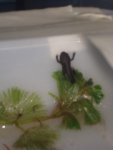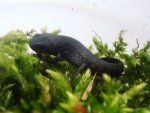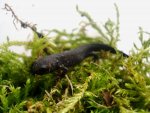Nathan050793
New member
- Joined
- Sep 24, 2007
- Messages
- 828
- Reaction score
- 32
- Points
- 0
- Location
- Pennsylvania
- Country
- United States
- Display Name
- Nathan
Has anyone idea how close to metamorphosis this guy is? It's just over three months old.
From the looks of it, he's getting very close to morphing. The adult coloration is a sure sign that metamorphosis is just around the corner, and three months old seems about right.
On a personal note, the larvae all look fantastic! Great job so far!



